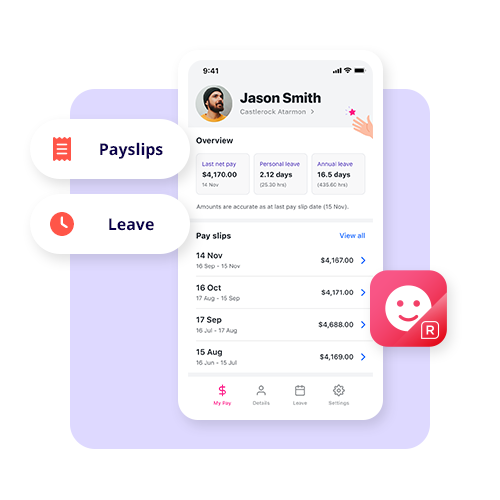When you’ve been scammed, it makes you feel sick to your stomach. Unfortunately, this is an all-too-common feeling among small businesses, as financial losses from scams amount to millions each year. When every dollar counts for small businesses, it can be devastating when you fall for a cyber scam. So, what can you do?
The good thing is that you’re not alone, and there is a step-by-step process to recover from a scam. Let’s look at what you can do when you’ve been scammed.
Act fast
If you suspect that you’ve been scammed, don’t panic. Whether a scammer has access to one of your accounts, or you’ve sent them money, or they have stolen your personal information, you need to act fast. Follow the steps below:
- Disengage: Block the scammer if they are in contact with you, and do not send more money.
- Update: Change passwords for affected accounts and run virus scans on affected devices.
- Contact: Report the activity to your financial institution and stop any suspicious transactions.
- Report, file, and recover: Report the scam to ScamWatch, file a police report if your details or money have been stolen, and recover with free help from cyber support agency IDCARE.
- Protect: Notify friends and family of an incident and implement cybersecurity measures.
When you’ve been scammed: Money, personal info, or hacked
Money
Personal info
Hacked
You have sent money to a scammer
If you have sent money to a scammer, it is crucial to try to stop any further money from being stolen. Depending on how the money has been scammed, you need to start from the source and go from there.
- Credit and debit cards: Contact the card provider and report the scam, and ask the provider to freeze the account and stop all transactions.
- Gift cards: Report the incident to the company that issued the card.
- Wire transfers: Contact the company or bank you used for assistance. If you used an app, contact the app developer or service provider.
- Unauthorised transactions: Contact the bank, freeze the account, and stop all further transactions.
The scammer has stolen personal info
When a scammer has a hold of your personal information, they are looking to use those details to impersonate you and take out money in your name. To secure your details, you need to:
- Inform: Report to your bank, financial services and superfund of the incident
- Get help: Contact IDCARE to help recover
- Update: Change passwords and update your security software on all accounts
- Monitor: Across your various accounts (email, phone, text, and social media), check for suspicious activity and regularly review your bank accounts and credit/debit card reports.
The scammer has hacked your devices
When a cybercriminal gains access to your devices, it is crucial to act quickly and prevent them from gaining further access. If scammer has access to your devices, do the following:
- Reset passwords, use a password manager, and install a multi-factor authentication app. Doing this locks down your accounts and protects you with multiple levels of security.
- Scan your devices with malware detection software. iPhone OS updates have strong built-in protections, but for Android/Google phones: go to the Google Play Store> tap your profile icon > Play Protect > Scan. Malware protection software will flag and delete any suspicious applications.
- Review all your applications and delete unnecessary apps. This reduces clutter and removes any compromised apps.
- Check your settings, update your operating system, review camera and microphone permissions, and conduct a safety check to see who you are sharing your information with.
- \\If all else fails and you cannot regain access to your devices, perform a factory reset. This is a last resort option and should only be considered if you have secure backups to restore from your device. Ensure that all your important accounts, both financial and personal, are safe and that you can still access them from another device before proceeding.
Scam example
Let’s go through an example of the steps to take after you have been scammed.
Scam scenario: Social media ad scam
Paul owns a small plumbing business that services multiple suburbs. One day, he receives a message from someone on Instagram claiming to be a representative for a company that promotes small businesses to increase visibility and get more clients. Paul looks at their website and finds that the package looks professional, and the testimonials are encouraging. Convinced, Paul sent a payment of $1,000 via wire transfer for the service.
After payment, Paul received a poorly worded email confirmation and further messaging to upgrade the plan for better results. Paul looks into the site a little further and realises he has been scammed.
What did Paul do next:
- Act fast: Paul doesn’t panic and stops communicating with the scammer.
- Disengages: Paul blocks the scammer on email, Instagram, and other messaging apps.
- Updates: Paul updates his passwords across accounts.
- Contacts: Paul contacts his bank, reports the scam and asks to freeze the account to stop any further transactions.
- Report, file, and recover: Paul reports the incident to ScamWatch, contacts the police to file a report, and reaches out to IDCARE for more information on how to secure his personal information.
- Protect: Paul informs his office manager and other employees about the scam and installs multi-factor authentication across his accounts.
In this scenario, we see that a scammer has set up a trap for a business owner by offering a promising financial opportunity. This is a common tactic among scammers, and it is essential to be able to spot a scam when you notice something that doesn’t quite seem right. When fraud does occur, follow Paul’s example and you’ll set yourself up to be better protected in the future.
Protecting yourself and your business from scams
The internet and social media are an essential part of running a business—unfortunately, this also means there are more ways than ever in which scammers can try to steal from you.
However, even though their tactics are improving, the red flags of a scam remain the same: too good to be true, someone claiming to be someone else, and easily debunked claims through research. There are ways to protect yourself from scams, but if you are a victim, make sure to follow the proper steps to get you and your business back on track. Remember, it’s not the end of the world; scams are a common occurrence. What’s important is that you protect yourself so that you can continue business as usual.













































